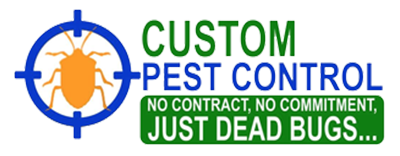Destructive Effects from Direct Contact Pesticides might hurt non-target organic entities present during application. Ineffectively coordinated applications can kill honey bees and different pollinators in or close to the objective site. Pesticides might hurt other untamed life, as well. Indeed, even little measures of certain pesticides might hurt them or annihilate their food source. Pesticides applied over enormous regions, for example, in the mosquito, gnawing fly, and backwoods bug control should be picked with incredible consideration to try not to harm non-target plants and creatures in or close to the objective site. Peruse the admonitions and headings on the pesticide marking cautiously to abstain from hurting non-target life forms during a pesticide application. Float from the objective site might harm untamed life, domesticated animals, pets, delicate plants, and individuals in Pest Control Essex . For instance, herbicide float can harm touchy close by plants, including yields, woodlands, or elaborate plantings. Float likewise can kill useful parasites and hunters close to the objective site.
Amphibian

Pesticide overflow might hurt fish and other oceanic creatures and plants in lakes, streams, and lakes. Amphibian life additionally can be hurt via indiscreet tank filling or depleting and by flushing or disposing of utilized holders along or in waterways. Commonplace pesticide marking articulations that ready you to these worries include: “Don’t make a difference this item or permit it to float to sprouting harvests or weeds assuming honey bees are visiting the treatment region.” “Incredibly poisonous to amphibian life forms. Try not to defile water by cleaning of gear or removal of squanders.”
Destructive Effects from Residues
Pesticides as a rule separate into innocuous parts after they are delivered into a climate. The breakdown time goes from under a day to quite a long while. The pace of pesticide breakdown relies generally upon the substance design of the dynamic fixing in the pesticide. The pace of breakdown likewise might be impacted by natural circumstances at the delivery site, for example,
▪ surface sort, compound piece, and pH,
▪ surface dampness,
▪ presence of microorganisms,
▪ temperature, and
▪ openness to coordinate daylight.
Tenacious pesticides leave deposits that stay in the climate without separating for quite a while. In some cases, these pesticides are attractive because they give long-haul bug control and may decrease the requirement for rehashed applications.
Steady Pesticide
In any case, a few persevering pesticides that are applied to or spilled on soil, plants, stumble, and different surfaces or into the water can later reason damage to delicate plants, creatures, or people that contact them. Here is a model marking explanation for a steady pesticide item: “Can stay in the dirt for a considerable length of time or more and cause injury to specific yields other than those recorded as OK on the name.” While utilizing tenacious pesticides, consider whether they’ve proceeded with presence in the climate is probably going to hurt individuals, plants, or creatures. At the point when pesticides develop in the assortments of creatures or the dirt, they are said to amass. At the point when a similar blending/stacking site or hardware cleaning site is utilized regularly without finding a way ways to restrict and tidy up spills, pesticides are probably going to gather in the dirt. Whenever this happens, plants, creatures, and particles that come into contact with the dirt might be hurt. Whenever pesticides collect in the dirt, there is additionally a higher probability that the pesticides will move offsite and defile the general climate or move into surface or groundwater.
